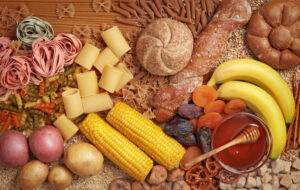‘Ketosis turns you into a fat-burning machine’ – TV Doctor Michael Mosley reveals everything we need to know about ketosis and the Keto diet
Doctor Micheal Mosley is a well-known TV doctor, famous for his appearances on the BBC since 1985.
You may also know him as the man who popularised the famous 5:2 diet after appearing in the BBC documentary, Eat, Fast and Live Longer, where he discovered the powerful science behind the ancient idea of fasting.
The reason for the 5:2 diet’s popularity, was because it allowed people to still enjoy their food five times a week and only restrict their calories twice a week.
When Dr Mosley tested out the fasting diet himself, he saw life-changing results. In fact, the Fast Diet (5:2 diet), has become one of the health phenomena of our times.
Doctor Mosley’s latest diet book is called, The Fast 800: How to combine rapid weight loss and intermittent fasting for long-term health.
Dr Mosley also provides a 12 week weight loss programme, available to purchase on the Fast 800 website and through their new App, where he brings together the latest science that suggests how 800 calories is the magic number when it comes to successful dieting and maintaining weight-loss.
So how and why does this diet work so well? The answer is ketosis.
What is Ketosis?
Your body is like a hybrid car; it runs on a combination of sugar and fat (glucose). When your stores of sugar (mainly found in the liver and muscles in the form of something called glycogen) start to run low through exercising, fasting to being on a low-carb diet, you switch to burning fat instead.
The way your body does this is by converting your stored fat into ketones, which it then burns for energy. Once this starts you become a fat-burning machine.
Put simply, ketosis is the process of the body burning fat for fuel.
This is also known as the metabolic switch – where your body switches from sugar-burning mode to fat-burning mode.
Experts think our bodies were designed to work in this way as a survival tactic when food was in short supply.
Historically we – and most animals – have had to exist in periods of feast or famine back when we didn’t have exposure to food 24/7 like we do now.
The brain had to learn to dig into our fat stores for energy, and cavemen would rely on this kind of energy to become mentally sharper during their fasted state so that they could find food and survive.
Intermittent fasting and exercise can also increase the production of ketone bodies
People often get confused between ketosis and being on a Keto diet.
The Keto diet is a very low-carb, high-fat diet that involves drastically reducing carbohydrate intake and replacing it with healthy fats such as avocado, cheese, lean meats and chocolate.
The reduced intake of carbs (less than 50g a day) puts the body into a metabolic state called ketosis hence the name Keto.
Going on a Keto diet will therefore induce ketosis, but being in a state of ketosis does not necessarily mean you’re on a Keto diet.
Intermittent fasting and exercise can also increase the production of ketone bodies and put your body into a state of ketosis, forcing your body to burn fat from its fat reserves.
READ MORE: The ketogenic diet – 10 steps to getting started from the world’s leading Keto expert
What are the benefits of a Keto Diet?
Originally developed to treat epilepsy in the 1920s, researchers have now unearthed a long list of health benefits associated with the keto diet, such as faster weight loss, improved blood sugar control and lower cholesterol levels.
Research suggests that Keto offers neuroprotective benefits that may help treat or prevent conditions like Parkinson’s and Alzheimer’s.
One study found that children following a ketogenic diet had improved alertness and cognitive functioning.
when you go into ketosis you stop feeling hungry
Ketosis is also a word you’ll probably see when searching for information on diabetes.
Halle Berry, 55 swears by the ketogenic diet. According to the Diet Doctor, Berry uses the keto diet, ‘as a means to stay in top shape and keep her type 1 diabetes in check’.
Berry cuts out many high calorie foods such as bread, cakes and biscuits, and according to Women’s Health Magazine, she fills her diet with healthy fats such as avocado, coconut oil, and butter.
Another reason the keto diet is so popular is when you go into ketosis you stop feeling hungry.
Other health benefits include:
- Rapid weight loss, and reducing the dangerous visceral fat (hidden fat) that hides around your organs.
- Reduces your blood pressure, lowering the risk of cardiovascular disease and Alzheimer’s
- Helps to manage type 2 diabetes
- Less snoring
- Better sleep
- Improved focus
- Feeling just generally much better.
READ MORE: Fasting for weight loss – the nutritionist’s guide

Which foods should we be eating on a Keto diet?
The keto diet is all about eating healthy fats, high protein, few carbohydrates and avoiding sugars.
You avoid carbs containing a lot of sugars and starches such as bread, pasta, rice and potatoes and some ketogenic diets limit or even cut out fruit due to its sugar content.
If you are going to eat fruit it needs to be a low carb option such as berries, including raspberries, blueberries, blackberries, strawberries.
On a typical UK diet, the average person consumes around 350 grams of carbs each day, which is usually ample to fuel the body.
Foods that are high in protein, fibre and healthy fats should be the main focus when on a Keto Diet
However, this means we never really tap into fat stores (which can be used as an efficient source of fuel for the body on low-carb and keto-friendly diets) and any excess is stored as body fat – leading to weight gain.
On the keto diet, you restrict your carb intake to less than 50 grams a day, your body eventually runs out of fuel and after three or four days it starts to break down fat for energy instead, which leads to weight loss.
Foods that are high in protein, fibre and healthy fats should be the main focus when on a Keto Diet.
Protein: plays an essential part in ensuring you stay fuller for longer on a low carb keto diet, and helps maintain muscle mass while losing weight. Animal proteins such as fatty fish (like salmon, mackerel and sardines), quality meat and poultry, and eggs are all keto-friendly.
Fibre: is essential for a healthy gut microbiome. It is digested by bacteria that have been linked to the prevention of weight gain and chronic illnesses like type 2 diabetes, and heart disease. Foods like broccoli, cauliflower, and leafy greens are all excellent sources.
Healthy fats: are an essential way of providing energy for your body to run on, instead of carbohydrates. They’re also shown to increase feelings of fullness. Olive oil is a healthy fat stable, which has shown to hugely benefit the heart. Greek yogurt has been shown to increase feelings of fullness and is thought to decrease intake of unhealthy foods.
READ MORE: A Mediterranean diet is proven to ease these 5 menopause symptoms

Foods that have more carbs in than you think?
All the usual culprits like bread, pasta and rice are well known for their high carb content.
But if following a Keto diet, be cautious of the following:
- Certain fruits, like bananas (berries and apples are good alternatives) and dried fruits.
- Low fat dairy products
- Sauces – particularly store-bought salad dressings and tomato sauce (ketchup)
- Starchy veg like potatoes, sweet potato, peas and corn; beans and chickpeas.
For most of these though, small amounts can be incorporated into your intake without going over the recommended >50g carbs per day.
Signs you’ve reached ketosis? (even the unpleasant ones…)
- You’re losing weight
- Your appetite has reduced
- Your mood and energy has stabilised
- Your breath smells like acetone (nail polish) or very sweet
- You’ve recovered from the ‘keto flu’ (low energy, brain fog, flu-like symptoms for some)
- Testing will show a reduction in blood glucose levels, blood pressure and keto sticks will show that you’re in ketosis.
Are there any side effects of being on the Keto diet?
A traditional keto diet can be restrictive. Cutting out carbohydrates isn’t as simple as avoiding pasta or bread, it also involves the restriction of certain vegetables, legumes and beans as well, which many find difficult to avoid.
Some people also notice side effects that can come with the traditional keto diet, such as headaches, insomnia, nausea and vomiting, and dizzines. This is known as the ‘keto flu’, and can make it hard to stick to.
Additionally, people often find that they have a ‘yo-yo’ effect, finding difficulty in keeping the weight off long-term.
READ MORE: Dr Michael Mosley reveals 3 benefits of intermittent fasting – plus how to get started

How low can you go? (Carbs we mean…)
You still need some carbohydrates in your diet but the optimal amount varies between individuals depending on activity levels, current metabolic health, and many other factors.
Under 50g of carbs per day will push most people into ketosis while still providing all important fibre and nutrients that are most easily accessible from veggies. There’s generally no need to go as low as less than 10g in a day.
The Fast 800 Keto is slightly higher in carbohydrates than a traditional ketogenic diet but it is still considered a ‘very low carb’ diet. For this reason many people find it easier to follow and sustain, with fewer side effects yet brilliant weight loss and health benefits.
The Fast 800 Keto is slightly higher in carbohydrates than a traditional ketogenic diet
The Fast 800 Keto is different from your typical keto diet – as well as being slightly higher in carbs it’s also lower in saturated fats, and focuses more on quality protein, and is more filling and nutrient-dense. It was designed to combine the keto principles with a Mediterranean diet, allowing
When following a low carb diet, it can be difficult to ensure you’re getting the right amount of nutrients, so The Fast 800 programme does it for you.
Follow The Fast 800 Keto approach on The Fast 800 programme – all the thinking (and tracking) is done for you.
Like this article? Sign up to our newsletter to get more articles like this delivered straight to your inbox.
Source link
#Doctor #Michael #Mosley #Keto #Diet
